Runners stretches after running: Stretching is an important part of virtually every workout — especially running. Even happening a brief jog works your muscles, and many docs recommend stretchingTrusted Source each before and after exercise.
Because exercise can shorten your musclesTrusted Source, skipping your post-activity stretch can lower your mobility over time. Stretching retains the muscles in the body versatile, in order that they will keep at their fullest range of movement.
Most docs also recommend that you just warm up before stretching and running. Muscles reply better to the stress the body places on them after they’ve been warmed up.
Warming up will be so simple as walking for five to 10 minutes, simply enough to get the blood flowing through the body.
Table of Contents
Static stretching vs. dynamic stretching
Stretching is often divided into two completely different types: static and dynamic.
Static stretching includes transferring a joint or muscle so far as you’ll be able to and then holding it there for a interval of time. For instance:
- Reaching down to the touch your toes, and when you’ve gone as far done as you’ll be able to, holding that place for a set length.
Dynamic stretching includes transferring your joints or muscles in particular motions for a set amount of reps. For instance:
- Swinging every of your legs again and forth 10 to fifteen times before a run.
There’s been a bit of again and forth in the health and analysis neighborhood concerning which kind of stretching is better to do pre-workout. But the final consensus appears to be that dynamic stretching is most useful pre-run, and static stretching is most useful post-run.
10 useful post-run stretches
Below are 10 essential muscle areas for runners, and some post-run stretches that assist keep them healthy. If you’re in search of a pre-workout stretching regime, we’ve got a useful one here.
Note: Because there are so many completely different varieties of static stretches out there, if one of these examples doesn’t be just right for you, or should you’ve found different static stretches that present better assist, be at liberty to make use of these.
Quadriceps

Often known as your quads, your quadriceps femoris muscles covers most of the entrance and sides of your thighs. Stretching your quadriceps is extra important should you’re running up or down hills.
To stretch them:
- Stand upright and pull your leg behind you with the corresponding hand.
- Tuck your pelvis and pull your shin towards your thigh.
- Keep your knee pointing downward as you do that stretch to protect your knee joint.
- Hold for a minimum of 30 seconds, then swap sides.
You can also use a chair to balance your self. This stretch should be felt in the entrance of your thigh, and out of your hip right down to your knee.
Hamstrings
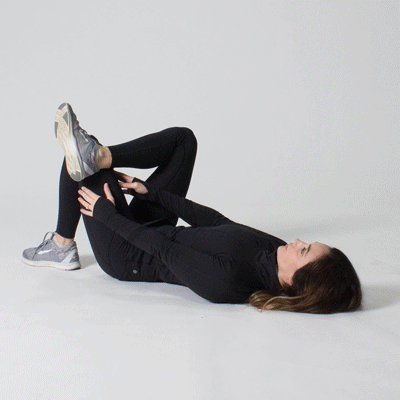
Your hamstrings make up the again part of your thigh, stretching from the hip to the knee. While this stretch predominantly helps together with your hamstrings, it’s also useful to your adductors.
For this stretch:
- Sit on the ground and prolong your left leg.
- Move your proper foot towards your internal thigh, in order that it touches the highest part of your left leg, if possible.
- Lean ahead, bending but not rounding your again and waist towards the left foot as if reaching to your toes.
- Hold for a minimum of 30 seconds.
- Repeat with the opposite leg.
You should really feel it in the again of your leg, out of your knees to your buttocks.
Calf

Your calf muscles on the again of your lower legs are a key space to concentrate to after a run. Poor calf stretching could make soreness and injury extra probably.
To stretch your calf muscles:
- Stand together with your proper foot behind your left.
- Bend your left leg ahead while keeping your proper leg straight.
- Be positive to not bend the fitting knee and to keep your proper foot firmly on the ground, pointing straight forward.
- Straighten your again and hold the pose for a minimum of 30 seconds.
- Repeat with the opposite leg.
- For a modification, or should you need assistance with balance, put your palms up against a wall and push into it.
You should really feel this stretch anyplace from the again of your knee right down to your ankle.
Iliotibial band
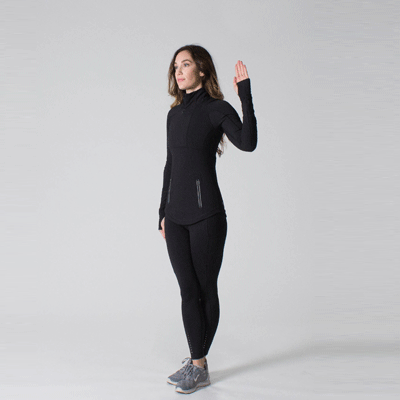
While this stretch technically lengthens your tensor fascia latae (an important muscle in your hip), it’s routinely referred to as the iliotibial (IT) band stretch as a result of it will possibly also assist together with your body’s iliotibial band, which runs on the outside of your thigh between your hip and shin.
Runners who don’t fairly have correct training methods, and long-distance runners, can typically injure this area.
To do that stretch:
- Stand close to a wall or something you need to use to balance your self.
- Cross your left ankle behind your proper ankle.
- While balancing together with your proper arm, stretch your left arm over your head.
- Reach up and over together with your torso and arm, stretching towards your proper side.
- Hold for a minimum of 30 seconds and repeat with the opposite leg.
When your left ankle is crossed behind your proper ankle, and you’re leaning towards the fitting, you’ll really feel the stretch in your left leg.
Psoas
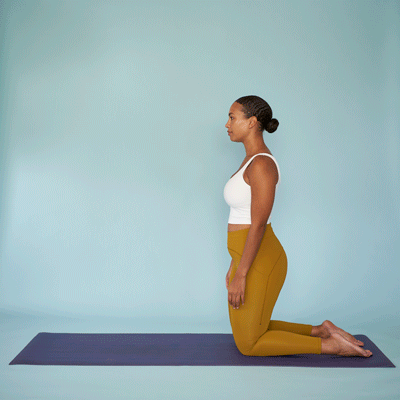
The psoas (pronounced “so-az”) muscle is on the entrance of your spine and connects the lower again to the higher thigh.
To stretch this muscle:
- Kneel together with your proper leg in entrance and each knees at 90 levels.
- Squeeze your glutes, tilt your pelvis under, and shift your hips ahead till you are feeling a stretch.
- Raise your left arm over your head, gently stretching towards your proper.
- As you’re stretching to the fitting, barely open your torso to the left.
You should really feel the stretch on the entrance of your hip in your again leg.
Piriformis and glutes

This stretch lengthens the piriformis, a deep muscle that runs out of your sacrum to your thigh bone.
It also stretches the gluteal muscles, which play a vital role for runnersTrusted Source. Strengthening and stretching your gluteal muscles is important for improving your running efficiency.
To do that stretch:
- Lie in your again with knees bent and toes flat on the ground.
- Cross your proper ankle over your left knee.
- Grab behind your left knee and carry your leg towards your chest.
- Hold for a minimum of 30 seconds, then swap sides.
You should really feel the stretch in the again of your thigh and buttocks.
Adductors
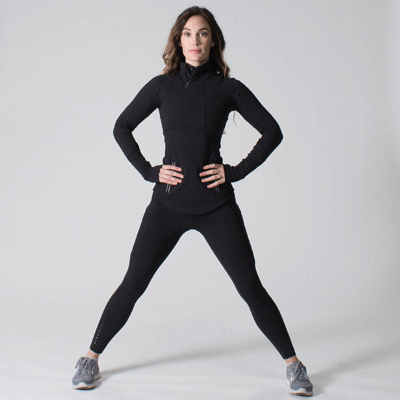
The adductor muscles are a bunch of muscles which are situated in the internal thighs and run out of your pelvis to your thigh, and in some circumstances, all of the way to your knee.
To stretch the adductor muscles:
- Stand together with your toes spread aside in a large stance.
- Without transferring your left leg, lean to the fitting and bend your proper knee till you are feeling a stretch.
- Hold for 30 seconds, then swap sides.
You should really feel a stretch in your internal thigh.
Spine
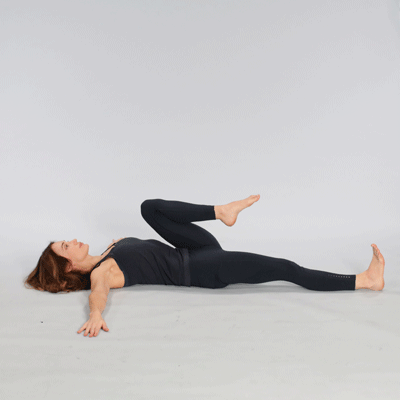
Harder running surfaces, like sidewalks, can place further stress on the spine and cause tightness and pain.
To stretch your complete spine:
- Lie in your again together with your arms stretched out to the side.
- Bend your proper knee in towards your chest.
- Gently let your proper knee fall in the direction of the left, keeping your proper arm and shoulder blade on the ground. Stop if you really feel a stretch.
You should really feel a stretch in your spine.
Lower again
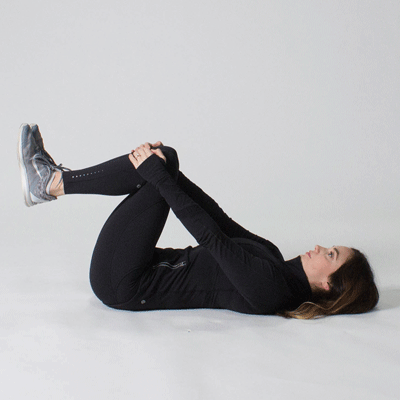
The lower again space is one other part of the body that runners should remember of. To stretch your lower again:
- Lie in your again.
- Grab each of your knees and pull them as much as your chest till you are feeling a stretch.
- Hold for 30 seconds.
Pros:
- Reduced Muscle Soreness: Stretching after running is like giving your muscles a pat on the back – it helps ease soreness and stiffness, so you can walk (or hobble) with pride.
- Improved Flexibility: Flexibility is the name of the game! Post-run stretches help keep your muscles loose and limber, making you as bendy as a pretzel at a yoga retreat.
- Injury Prevention: Nobody wants to be sidelined with a pulled hamstring or a cranky IT band. Stretching after running helps reduce the risk of injury, keeping you in the race for the long haul.
- Enhanced Recovery: It’s like hitting the reset button for your muscles. Post-run stretches promote blood flow and oxygen delivery, helping you bounce back faster than a rubber ball.
- Mental Relaxation: Stretching isn’t just for your muscles – it’s for your mind too! Taking a few moments to stretch after a run can help you unwind and destress, like a mini vacation for your brain.
- Better Posture: Stand tall and proud! Post-run stretches can help improve your posture by releasing tension in your muscles, making you as straight as an arrow.
- Long-Term Mobility: Keep those joints happy and healthy! Regular stretching after running can improve joint mobility and range of motion, ensuring you can keep pounding the pavement for years to come.
Cons:
- Time Consuming: Stretching after a run takes time – time that could be spent rehydrating or refueling with a post-run snack. It’s like trying to fit in a nap between meetings – sometimes, there just isn’t enough time.
- Boredom: Let’s face it – stretching can be a bit boring. Holding the same position for 30 seconds feels like an eternity, especially when you’re itching to jump in the shower and wash away the sweat.
- Potential for Overstretching: Stretching is like Goldilocks – not too much, not too little, but just right. Overstretching after a run can strain your muscles and leave you feeling more sore than when you started.
- Inconvenient: Sometimes, finding a quiet spot to stretch after a run can be a challenge. It’s like trying to find a needle in a haystack – except the haystack is a crowded park and the needle is a patch of grass without dog poop.
- Not Always Effective: Despite your best efforts, stretching after a run doesn’t always do the trick. Some days, your muscles still feel tight and cranky, no matter how many downward dogs you do.
- Resistance from the Couch: After a long run, the couch can be mighty tempting. Stretching requires motivation and willpower – two things that are in short supply when Netflix is calling your name.
- Not a One-Size-Fits-All Solution: What works for one runner may not work for another. Finding the right stretches for your body and your needs can be a bit of trial and error, like trying to assemble Ikea furniture without the instructions.
- Read more: Can I lose 10 pounds in one month?
- Read more: Is it bad to want to lose weight fast?
- Read more: 9 health benefits of vegetables legumes and beans
- Read more: 6 Best candy for weight loss – Science based
The Bottom line (Runners stretches after running)
To summarize, stretching after a run is like giving your muscles a well-deserved hug after a long day; it’s soothing, rejuvenating, and keeps them from forming obstinate knots. So don’t skip your post-run stretches! Whether you’re reaching for your toes like a determined giraffe or performing the basic quad stretch like an expert, your muscles will appreciate it. It’s also an excellent opportunity to perform a few yoga poses and demonstrate your flexibility to the neighborhood squirrels. So lace up your sneakers, hit the street, and remember that a little stretching can go a long way toward keeping those muscles happy and healthy. Happy stretching, fellow runner!
People also ask:
Should runners stretch after running?
Absolutely! Stretching after a run is like hitting the reset button for your muscles – it helps prevent stiffness and soreness, keeping you feeling limber and ready to tackle your next adventure. Plus, it’s the perfect opportunity to strike a few goofy poses and pretend you’re a yoga master. Whether you’re reaching for the stars or touching your toes like a bendy straw, your body will thank you for the TLC. So don’t skip out on those post-run stretches – your muscles will thank you later, and you might even impress a passing squirrel with your flexibility. Stretch on, fellow runners!
What stretches are best for runners?
Ah, the age-old question: what stretches are best for runners? It’s like choosing toppings for your pizza – so many options, but only a few can claim the title of “supreme.” But fear not, fellow runners! Some top contenders include the classic calf stretch (because nobody likes a tight calf), the quad stretch (because who doesn’t love pretending to be a flamingo?), and the glorious hamstring stretch (because touching your toes is a feat worthy of applause). So grab your stretchy pants and get ready to limber up – your muscles will thank you, and you might even impress a passing squirrel with your flexibility. Stretch on, my friend!
Can runners be stretched?
Absolutely! Runners can be stretched, just like a rubber band – but hopefully with less snapback. Flexibility is key! While runners may have strong legs, they can still benefit from a good stretch to keep those muscles loose and limber. It’s like giving your body a little TLC after pounding the pavement like a herd of stampeding elephants. So whether you’re reaching for the sky like a sunflower or bending down to touch your toes like a determined tortoise, your muscles will thank you for the extra attention. Stretch on, fellow runners!
How long after a run do you stretch?
After a run, timing is key – it’s like trying to catch a train, but without the conductor yelling “All aboard!” Aim to stretch within 5 to 10 minutes post-run, when your muscles are still warm and pliable. Think of it as striking while the iron is hot! Stretching too soon is like trying to bend a frozen popsicle stick – it’s not gonna happen. But waiting too long is like missing your chance to snag the last piece of pizza – a missed opportunity. So lace up those sneakers, hit the pavement, and remember: stretching is the cherry on top of your runner’s sundae!
